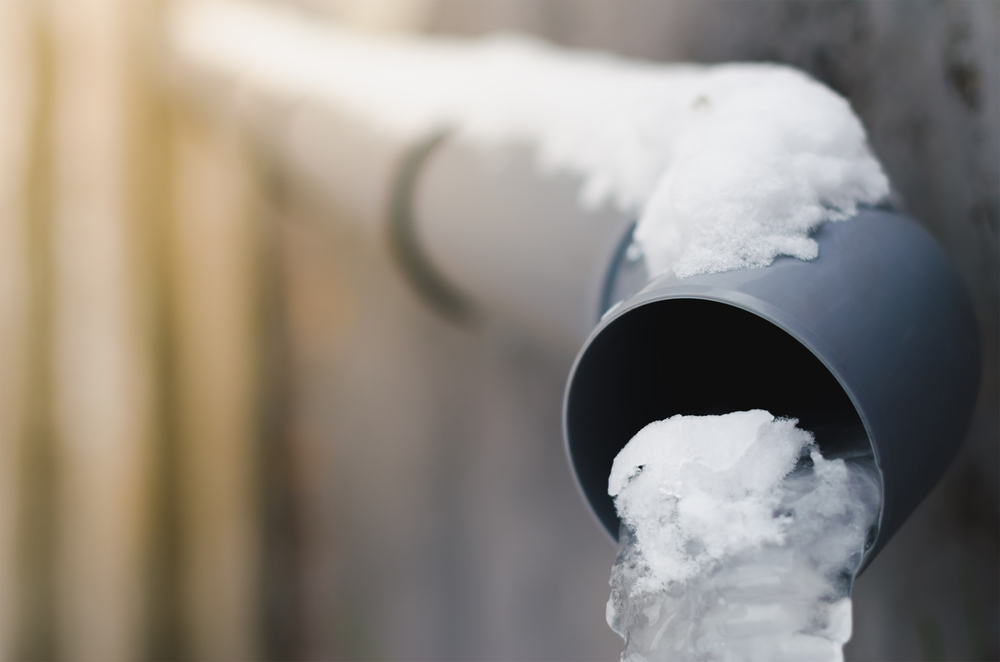Ways to Avoid Frozen Plumbing in Winter: Expert Tips
Ways to Avoid Frozen Plumbing in Winter: Expert Tips
Blog Article
They are making a few good points on the subject of Preventing and dealing with frozen pipes overall in the article down below.

Cold weather can damage your plumbing, especially by freezing pipes. Here's just how to avoid it from occurring and what to do if it does.
Introduction
As temperatures drop, the danger of icy pipelines increases, potentially resulting in pricey repair work and water damages. Recognizing how to prevent frozen pipes is critical for homeowners in cold climates.
Prevention Tips
Shielding at risk pipes
Cover pipelines in insulation sleeves or make use of warm tape to secure them from freezing temperatures. Focus on pipelines in unheated or outside locations of the home.
Home heating strategies
Maintain interior rooms adequately heated up, specifically areas with pipes. Open up closet doors to allow cozy air to circulate around pipes under sinks.
Just how to identify icy pipelines
Try to find reduced water circulation from faucets, unusual smells or noises from pipelines, and visible frost on subjected pipelines.
Long-Term Solutions
Structural changes
Think about rerouting pipes away from exterior wall surfaces or unheated locations. Include additional insulation to attic rooms, basements, and crawl spaces.
Upgrading insulation
Purchase high-quality insulation for pipelines, attics, and wall surfaces. Appropriate insulation helps preserve constant temperatures and minimizes the risk of frozen pipelines.
Securing Exterior Pipes
Garden tubes and outdoor faucets
Detach and drain pipes yard pipes prior to winter months. Install frost-proof faucets or cover exterior taps with insulated caps.
Comprehending Frozen Pipes
What creates pipes to ice up?
Pipes ice up when revealed to temperature levels listed below 32 ° F (0 ° C) for expanded periods. As water inside the pipes ices up, it broadens, taxing the pipeline walls and possibly causing them to break.
Threats and damages
Icy pipes can bring about supply of water interruptions, building damage, and expensive repair work. Burst pipes can flooding homes and create considerable architectural damages.
Indications of Frozen Pipes
Identifying frozen pipes early can prevent them from bursting.
What to Do If Your Pipes Freeze
Immediate activities to take
If you suspect frozen pipelines, keep taps open to eliminate stress as the ice melts. Use a hairdryer or towels taken in hot water to thaw pipelines gradually.
Final thought
Avoiding icy pipes requires proactive actions and fast responses. By comprehending the causes, indications, and preventive measures, home owners can safeguard their plumbing throughout cold weather.
6 Proven Ways to Prevent Frozen Pipes and Protect Your Home
Disconnect and Drain Garden Hoses
Before winter arrives, start by disconnecting your garden hoses and draining any remaining water. Close the shut-off valves that supply outdoor hose bibs and leave the outdoor faucet open to allow any residual water to drain. For extra protection, consider using faucet covers throughout the colder months. It’s also important to drain water from any sprinkler supply lines following the manufacturer’s directions.
Insulate Exposed Pipes
Insulating your pipes is an effective way to prevent freezing. Pipe insulation is readily available at home improvement stores and is relatively inexpensive. Pay close attention to pipes in unheated areas such as the attic, basement, crawl spaces, or garage. Apply foam insulation generously to create a buffer against the cold. You can also wrap your pipes in heat tape or thermostat-controlled heat cables for added warmth.
Seal Air Leaks
Inspect your home for any cracks or openings that could let in cold air. Seal any holes around the piping in interior or exterior walls, as well as the sill plates where your home rests on its foundation. Additionally, make sure to keep your garage door closed unless you’re entering or exiting. Leaving it open creates a significant air leak that can lead to frozen pipes.
Allow Warm Air Circulation
During cold snaps, it’s essential to allow warm air to circulate evenly throughout your home. Leave interior doors ajar to promote better airflow. Open kitchen and bathroom cabinets to help distribute heat consistently around the rooms. If you have small children or pets, be sure to remove any household chemicals or potentially harmful cleaners from open cabinets for safety.
Let Faucets Drip
A small trickle of water can make a big difference in preventing ice formation inside your pipes. When temperatures drop significantly, start a drip of water from all faucets served by exposed pipes. This continuous flow helps prevent the water from freezing. Additionally, running a few faucets slightly can relieve pressure inside the pipes, reducing the chances of a rupture if the water inside does freeze.
https://choateshvac.com/6-proven-ways-to-prevent-frozen-pipes-and-protect-your-home/

Hopefully you enjoyed our article about Helpful Tips to Prevent Frozen Pipes this Winter. Thank you so much for taking the time to read through our content. Are you aware of another individual who is excited by the topic? Take a moment to promote it. Many thanks for taking the time to read it.
Get Estimate Report this page